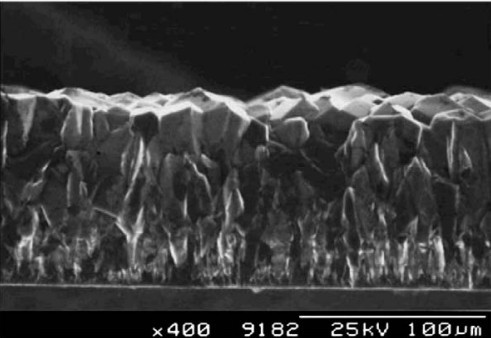Abstract Recently, Yu.A.Mankelevich of the Skobel'tsyn Institute of the Russian National University and the research team led by Allan of the University of Bristol School of Chemistry published a research statement in the standard CVD diamond growth mode...
Recently, Yu.A. Mankelevich of the Skobel'tsyn Institute of the Russian National University and the research team led by Allan of the University of Bristol School of the United Kingdom published a research statement, based on the standard CVD diamond growth model, they created a new simplification. Diamond growth mode - Monte Carlo simulation. This mode reveals that all C1 hydrocarbyl groups (CH3, CH2, CH and C atoms) at the monovalent and divalent radical positions have an effect on the diamond surface properties. Monte Carlo simulation (MC simulation) is a method of calculating the distribution characteristics by setting a random process, generating time series repeatedly, calculating parameter estimators and statistics.
During the MC mode experiment, the standard deposition conditions of diamond growth remain basically the same, mainly adding CH3 to the surface of the monovalent base to produce large crystals; at the same time, the addition of CH3 at the position of the divalent radicals will also Produce large single crystals.
However, the researchers found that other reactive hydrocarbon species such as C2H and C2 appeared in the position of divalent radicals in this process. These products will accumulate on the polycrystalline diamond film, resulting in some stubborn consolidation defects, even non-etchable. This surface defect either becomes the nuclear implantation point of the new epitaxial growth film or grows new crystallites in a direction opposite to the direction of the host product. Allan calls it "nuclear implantation," which causes a drop in the crystal size of the diamond; if "nuclear implantation" occurs frequently, the diamond particle size shrinks from millimeters to micrometers and then to nanometer dimensions.
In view of this, the research team performed surface migration of the CH2 group on the recombined dimer arrangement to observe and predict the diamond growth rate. Using the MC mode, the worker obtained data for a set of monovalent and divalent radicals under typical CVD diamond growth conditions. These data show that ~10% of the carbon atoms on the surface of the diamond film support the monovalent group, and 1% of the surface carbon atoms are composed of divalent radicals (a divalent radical on two adjacent carbon atoms). This mode also reveals that the average particle size of the diamond crystal depends on the substrate temperature and is more important than the concentration ratio of all C1 hydrocarbons of atomic hydrogen. The research results show that under the Monte Carlo method, the diamond crystal size is successfully changed from nanometer size to micron and then to millimeter size.

Cross-sectional columnar structure of microcrystalline CVD diamond film grown on silicon substrate under scanning electron microscopy

Through experiments, the researchers have further understanding and understanding of the effects of nuclear implantation and defect formation on the film growth surface, especially in the microcrystalline diamond columnar growth and nanocrystal size diamond growth.
By reasonably assigning input parameters, the researchers were able to obtain many of the CVD diamond growth characteristics replicated by the MC simulation. Further extension of the simulation, such as the formation of composite particle size, allows the staff to qualitatively simulate microcrystalline diamond growth, nano-sized diamond growth, and super-nano-diamond growth.
According to Yu.A. Mankelevic, the parameter controlling the size distribution of the crystallites is actually a probability that the moving carbon species produce immobile, non-etchable surface defects that act as key nuclei for the growth of new diamond growth layers. Or the probability of the growth of new defective crystallites. (Compiled from Diamond & Related Materials)
Oil Floater
Defoamer is fast-effective and convenient for using in SPAs, But for the a swimming pool, the new product Floater is a better choice. It destroys oil drops that suspended in water and compels them to float out, then oil and waste can be removed easily by skimmers. Now, enjoy the clear water.
Product name: Oil Floater
Appearance: Viscous blue liquid
pH (1% water solution): 3 – 8
Density (g/mL): 1.05 - 1.15
Water Solubility: miscible
Packaging: Standard export package or Customized
Payment: L/C,D/P,T/T ETC.
Swimming Pool Oil Flotation,Oil Floater,Pool Chemical Floater,Oil Barrier Floater
SHIJIAZHUANG AQUAENJOY ENVIRONMENT CORPORATION LIMITED , http://www.aquaenjoy-chem.com